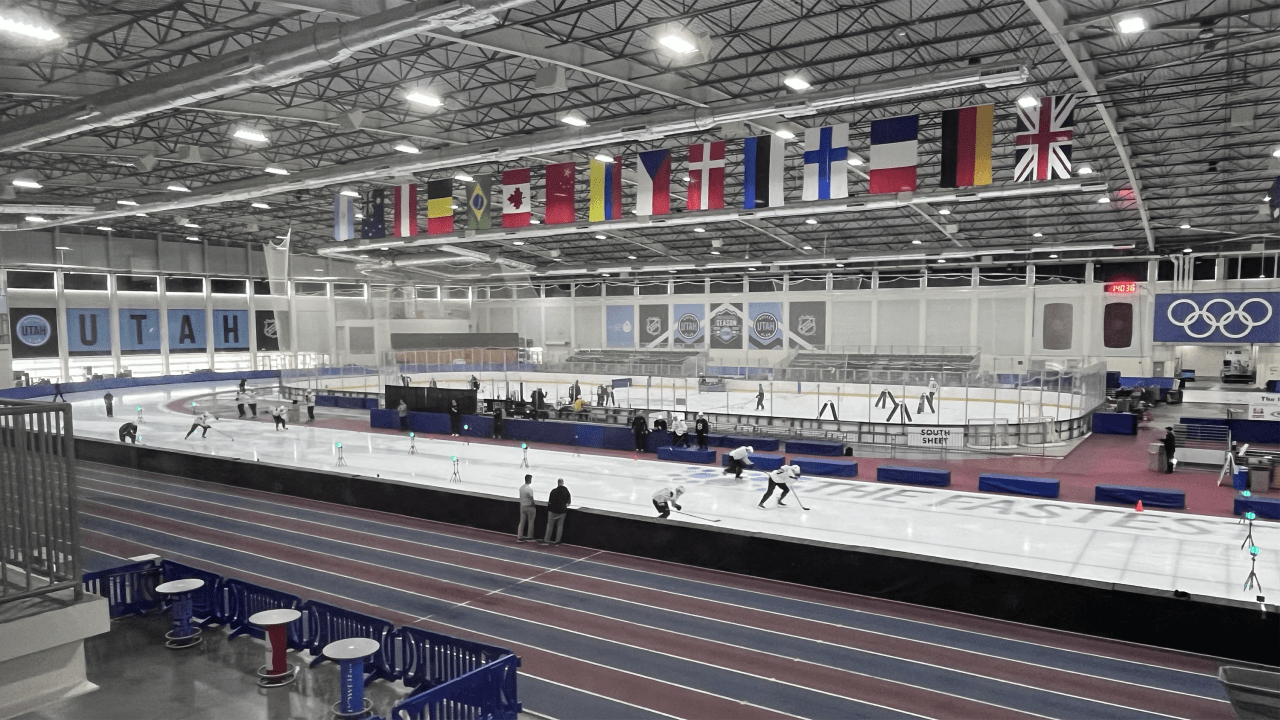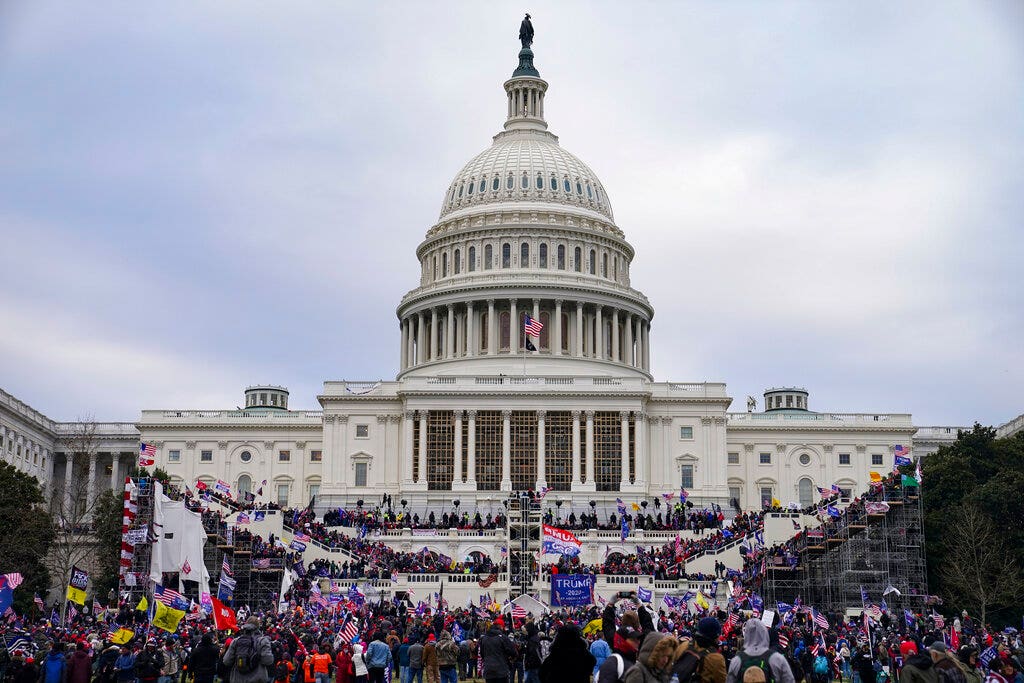Jewish adherents across the globe have begun the annual 10-day examination of their lives and deeds. It started with Rosh Hashana (Jewish New Year) on the evening of Oct. 2 and concludes with Yom Kippur (the Day of Atonement) on the evening of Oct. 11.
It is a time to reflect, remember, recommit, repent and forgive.
This year’s High Holy Days are especially fraught for the world’s Jewry with so many eyes on Israel and its ongoing battles against Hamas in Gaza, Hezbollah in Lebanon and now against Iran. War is also raging in Ukraine, and deep divisions are polarizing Americans during this election season.
Here are excerpts from The Salt Lake Tribune’s “Mormon Land” podcast with Rabbi Samuel Spector, who leads Salt Lake City’s Congregation Kol Ami, and explored questions of repentance and atonement during troubled times.
What is the meaning of Rosh Hashana?
Rosh Hashana commemorates the creation of the world and humankind. I like to think of it as an opportunity for us to start to re-create ourselves. On Rosh Hashana, God makes a list of who is going to have a place in the world and who is not going to be written into the book of life. But over those 10 days between the two holidays, we have the opportunity to change God’s mind, and, once Yom Kippur is over, that list is sealed. So there’s a little bit at stake. I prefer to think of it less literally and more like if my life were to end in the next year, would I be remembered as a good person?
What about Yom Kippur?
Yom Kippur is a very solemn day. We have 25 hours of fasting — if you’re medically able to — no food, no water. We have five prayer services. It is a day where we are really thinking about what we have done individually and communally that we could be doing a better job of, and also how we can seek forgiveness from others, how we can improve ourselves over the next year, and make our lives worth living. And also perhaps how we can forgive others, or, even if we aren’t in a place to forgive others, how we don’t let anger hold us captive for the next year.
(Trent Nelson | The Salt Lake Tribune) Cantor Wendy Bat-Sarah and Rabbi Samuel Spector at Congregation Kol Ami in Salt Lake City in 2019.
Do more people come to services on the High Holy Days?
Yes. Typically at a Shabbat service on Saturday morning, we’ll have about 70 to 80 people. I would guess that on the evening of Yom Kippur, we get about 700 people that come to our synagogue. It’s like the Super Bowl sometimes.
With the rise of antisemitism in America and increasing violence on the world stage, what steps have you taken to protect your congregation?
Sadly, since 2015 and up to the past year, we’ve seen antisemitism growing annually to record numbers. In 2022, there were nearly 3,000 antisemitic incidents in the United States recorded by the ADL [Anti-Defamation League] which estimates that they only record 1 out of every 40 events. Last year, that number reached close to 9,000 and most of that was toward the end of 2023. So I don’t know what the 2024 numbers are, but after this horrible thing that happened on Oct. 7, we received our first of four bomb threats on Oct. 8. We’ve sadly had to file numerous police reports because of harassment, threats, intimidation. We had to do some construction projects to make our synagogue safer. If you go to the synagogue right now, you will see two police cars in our parking lot, because whenever our building is open, we have a police presence, or try to at least, and we have to pay for those off-duty officers. We’ve been looking at somewhere around a half-million dollars for security.
(Rick Egan | The Salt Lake Tribune) Kaylee Gordon waves a flag as she and her family gather with members of Congregation Kol Ami to mourn those slain in Hamas attacks.
Those threats aside, how do you and your congregation feel about living in Utah?
I feel immensely loved and accepted here. For every bad thing that’s happened, we’ve had 100 amazing things.…When people heard about our financial issues due to security, we had people call in who donated $10 and others who donated $10,000 just to make us feel loved. One of our local Latter-day Saint stakes, the East Millcreek Stake [a group of congregations], called us the last week of October and said, “We don’t know how to help, but we want to send our young people to your houses to do a leaf cleanup so you have one less thing to worry about.” The amount of love and support we’ve received has been beyond anything I could ever imagine.
When you see the suffering, especially of innocents, in Israel, Gaza and Lebanon, what thoughts run through your mind?
I haven’t been to Gaza, but I’ve been to the West Bank plenty. I lived in Israel. I’ve been to southern Lebanon and met with Hezbollah militants, actually. Most people don’t want suffering. I have a bias. I’m not going to act like I don’t. But I try to always see other perspectives and understand other perspectives.… I’ve gotten to know the Lebanese people through my time in Lebanon and know the Palestinian people through my time in the Palestinian territories. I’ve certainly gotten to know the Israeli people. They’re all beautiful people. What’s happening is really, really, really tragic. …[My hope is] that folks in those three areas might be saying, “We need leadership that puts our needs first and puts our lives first.”
(David Guttenfelder | The New York Times) Residents on Tuesday, Oct. 1, 2024, retrieve salvageable items from the rubble of a building destroyed by an Israeli airstrike in Ain el-Delb, a Palestinian refugee camp on the outskirts of the coastal city of Sidon, Lebanon.
What would be a theological response as opposed to a political response?
In the [biblical] Book of Jonah, Jonah badly wants the city of Nineveh to be destroyed. Yet the people of Nineveh listen to Jonah and change their ways, and God does not destroy the city. You’d think Jonah would be happy. He’s not happy. He wanted to see Nineveh be completely destroyed, and God chastises him for this. And we also read elsewhere in the Hebrew Bible that we’re not supposed to celebrate our enemies’ downfall and that we are supposed to take all measures to prevent the loss of innocent life. So for us, as Jews, we need to make sure that we maintain our humanity in this, that we don’t forget that the people over in Gaza or southern Lebanon are people, that they’re just like us and that we cannot celebrate their suffering.
Do you have hopes for peace anytime soon?
I do. Israel has been held in this political lock with only [Prime Minister Benjamin] Netanyahu being the main source of power for the last 15 years. I think that Israelis are ready to get rid of him and that we need fresh thinking over there.…Hopefully, with these Israeli operations in southern Lebanon and Gaza, it could set both Hamas and Hezbollah back far enough that there won’t be wars for a good while. That’s my hope and prayer.
With this new year, what’s your concluding message?
Fred Rogers, a la “Mr. Rogers,” famously said after 9/11, to “look for the helpers” when things are scary and bad. This past year has been very lonely for many. There were a lot of people we thought would be there for us who were not, a lot of people who we thought were friends, who were not, and a lot of people who did step up for us. And so a message that I have for folks is that it’s not good for a person to be alone. So what can you do to step up and be part of the solution for somebody else, and, in doing so, also remove your own loneliness? …Part of the problem with the Yom Kippur sometimes is we sit and focus on those who have wronged us, and a lot of times, people are not thinking as much about who they have to apologize to. We need to spend as much, if not more, time thinking about those who have not let us down, those who have been our friends, those who have reached out, and also how we can follow in that example.
To hear the full podcast, go to sltrib.com/podcasts/mormonland. To receive full “Mormon Land” transcripts, along with our complete newsletter and exclusive access to all Tribune religion content, support us at Patreon.com/mormonland.
Editor’s note • This story is available to Salt Lake Tribune subscribers only. Thank you for supporting local journalism.















/cdn.vox-cdn.com/uploads/chorus_asset/file/25007267/intel14900k_3.jpg)










/cdn.vox-cdn.com/uploads/chorus_asset/file/25439572/VRG_TEC_Textless.jpg)






